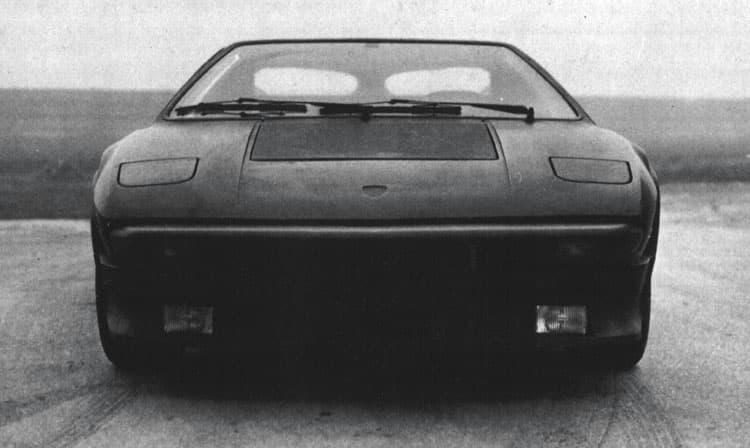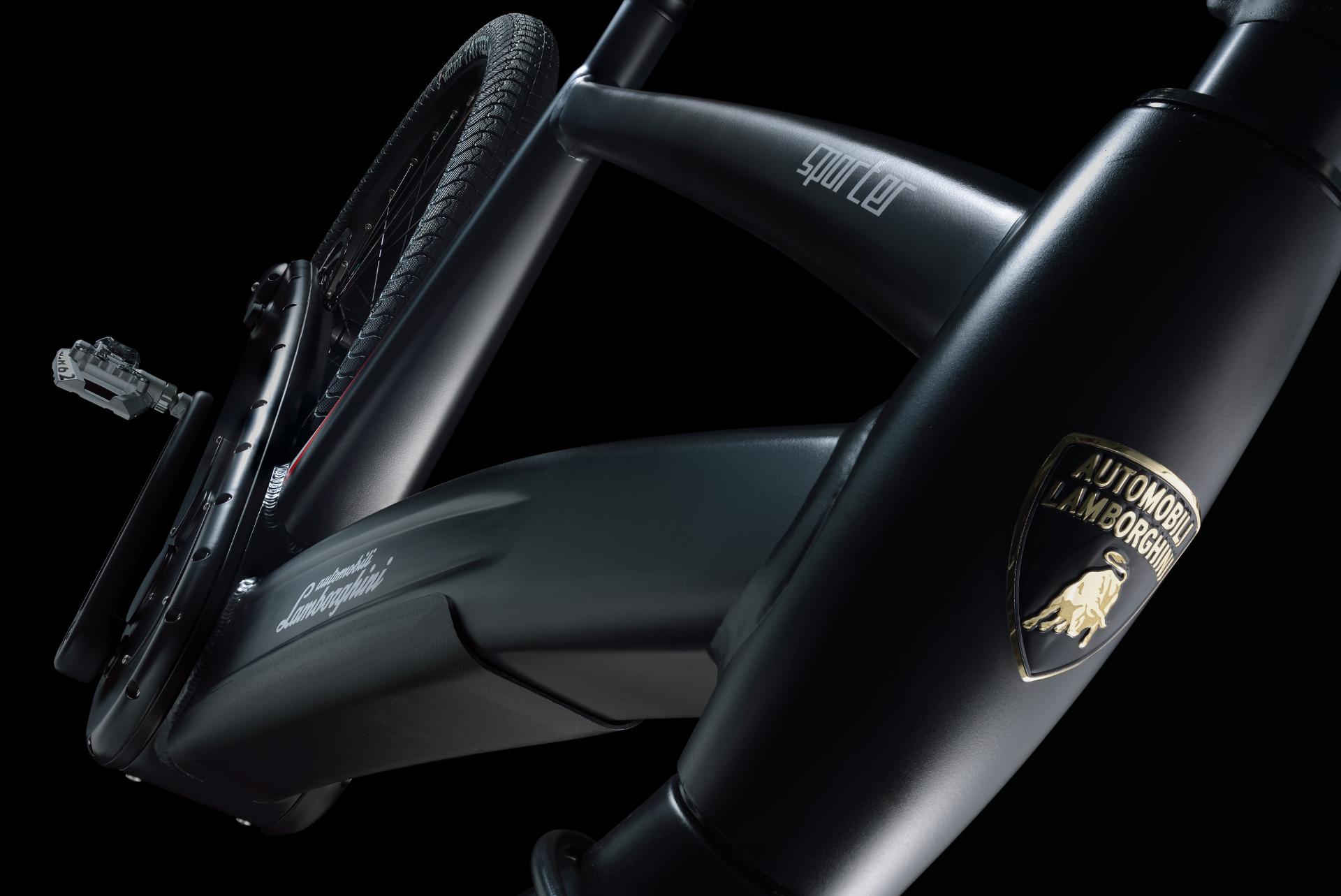The Urraco was put into production, but design faults and poor workmanship prevented the P250 to obtain the success the car deserved. In a desperate effort to boost sales of the Urraco, Bertone was contacted to design an open top version of the V-8. Bertone came up with two preliminary drawings which are shown here, the first still used the original 2+2 configuration of the Urraco. As seen on the image the section above the front seats was removed, creating a ‘Targa’-style roof configuration.
On this early drawing the resemblance with the original Urraco was still very evident, the rear side windows were still there although smaller in size to be able to integrate a roll-over bar in the front of the remaining roof section.
This was necessary to obtain a decent bodywork stiffness without the middle roof section, an illness found on many convertibles of that time.
The second drawing was already closer to the final Silhouette prototype, this proposal was only a two-seater like the Silhouette would turn out to be. On this drawing the rear side windows were gone, only small sections of them were left in front of the roll-over bar which also integrated into the roof of the car, on both cars this bar was finished in chrome.
Also on both proposals the rear louvers covering the engine were gone, they were replaced by an engine hood as seen on the second drawing, late production Urracos would use a similar treatment to comply with French regulations. Again this drawing was still very closely based on the production Urraco, the chrome bumpers were still there, but Automobili Lamborghini deemed both design too subtle, not aggressive enough, bare in mind the Silhouette would have to be sold next to the stunning Countach at that time, a real space-age design.
A third design was created, this one even made it into prototype stage, the car was completely built on a US-edition Urraco, recognizable by the black bumpers at the front and rear of the car. This final Silhouette prototype was tested thoroughly before production began, the car was actually tested on the road too, therefore the Lamborghini logo was removed from the front hood and at the rear no logo’s were mounted to disguise the car as a future Lamborghini.
The resemblance to the Urraco was still very close, the most visible difference was the open roof configuration, but also some minor changes were made to the original Urraco design, the front hood was closed up, no more louvers were integrated. The front also received a deep chin spoiler with integrated fog lights, the wheels were enlarged and changed in design to resemble the ones used on the Bravo prototype, this five-hole phone-dial look was to become the Lamborghini trademark wheel design for several decades after the Silhouette, a similar design is still used on the Diablo in 2000, although in big 18-inch instead of the 15-inch used on the Silhouette.
Because of the larger wheels, special wheel arch extensions were mounted, the prototype still used round ones on all four wheel arches, but on the production cars they were replaced by more angular ones completely integrated into the bodywork.
The Silhouette became a two-seater, there was no room left in the rear, especially when the roof was stored there, the rear engine hood was rather special, the strange design of this prototype never made it into production, at the sides behind the windows new air intakes were mounted on the final production cars because the engine wasn’t cooled enough with the prototype configuration.
This Silhouette prototype was further developed into the final car which was presented to the public on the 1976 Geneva Auto Show, the Silhouette featured here was in fact the first car of a series of only 52 cars ever made.



